What's New
Displaying results 471 - 480 of 4913
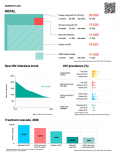
Resource | Reviews and Snapshots,
The country card snapshot prepared by UNAIDS Regional Support Team for Asia and the Pacific and AIDS Data Hub provides information on the HIV epidemic and response in Nepal.
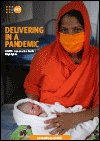
Resource | Publications,
Annual Report 2020, ‘Delivering in a pandemic’, provides a snapshot of our results achieved across 22 Country Offices and our sub-regional office in the Pacific. These results are illustrated through stories from the ground that provide an in-depth perspective of the impact of our work on the lives of people, with a focus on the most vulnerable women and girls.

Resource | Publications,
The number of women and girls in prison, estimated to be more than 740,000, is increasing: between 2010 and 2020 there was a 17 per cent increase globally. Punitive drug policies are known to be a key driver of rising prison populations and to have a particular and disproportionate impact on women.
Drawing on the report, Sentencing of women convicted of drug-related offences, as well as findings from an expert meeting held in London in February 2020, and the recent briefing, Punitive Drug Laws: 10 years undermining the Bangkok Rules, this model for reform details how policy makers and criminal justice practitioners can respond effectively and positively to reduce the unnecessary imprisonment of women for drug‐related offences in line with international standards.

Resource | Publications,
The snapshot of key findings on HIV and sexual health behaviour reveal that in many setting, sexual behaviour can be considered a risk factor for health and social issues. These include reproductive health, HIV and other sexually transmitted infections, and gender equality and empowerment.
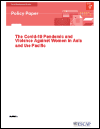
Resource | Publications,
In the background of the global public health and economic turmoil of the Covid-19 pandemic lurks another crisis: rising rates of violence against women (VAW). This paper provides a preliminary understanding of how the Covid-19 pandemic influences the prevalence of VAW within Asia and the Pacific.
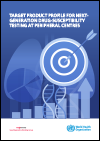
Resource | Publications,
In an effort to foster and achieve universal access to TB diagnostics and inform research and development (R&D) priorities for TB diagnostic tools, the World Health Organization (WHO) has released an updated target product profile (TPP) for next-generation tuberculosis drug-susceptibility (DST) testing for M. tuberculosis at peripheral centres.
This is an update of one of the high-priority TPPs published by WHO for new TB diagnostics in light of several advances in the TB diagnostics and treatment pipelines that have been observed. This updated TPP is intended to specify desire attributes of next-generation drug-susceptibility testing for M. tuberculosis and align the development of new interventions with evolving gaps and the needs of individuals and populations.
Resource | Publications,
A number of the 17 Sustainable Development Goals (SDGs) adopted by the United Nations General Assembly in September 2015 have targets that relate to health. However, one goal – SDG 3 – focuses specifically on ensuring healthy lives and promoting well-being for all at all ages. Target 3.8 of SDG 3 – achieving universal health coverage (UHC), including financial risk protection, access to quality essential health-care services and access to safe, effective, quality and affordable essential medicines and vaccines for all – is the key to attaining the entire goal as well as the health-related targets of other SDGs.

Resource | Publications,
The report intends to contribute to the sensitization of key stakeholders involved in responding to the needs of LGBT people who use substances in Thailand, to provide a solid basis for developing evidence-based public health interventions grounded on harm reduction principles, to stimulate cooperation between stakeholders working with LGBT people and people who use substances, and to support strategic advocacy towards a more enabling legal and policy environment and more targeted resource mobilization efforts.
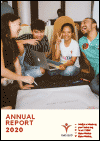
Resource | Publications,
2020 has been an unprecedented year for all Youth LEADers to tackle the COVID-19 pandemic and ongoing HIV epidemic. During this challenging time, young key population-led organizations in the Asia-Pacific have shown resilience to support communities. They have been at the forefront of the HIV response to implement innovative solutions that ensure the continuity of HIV services.

Resource | Publications,
Violence against women and children are linked. These harms share risk factors, including a lack of responsive institutions and weak legal actions against violence. These forms of violence are also both fueled by the harmful social norms that condone violent discipline, promote toxic masculinity, prioritize family reputation and blame victims – all of which perpetuate gender inequality. Intimate partner violence (IPV) and VAC often co-occur within spaces and relationships of trust, such as in the home or in schools. Evidence indicates that children in households affected by IPV are more likely than other children to experience violent discipline by both male and female caregivers. Further, witnessing IPV may have long-term health and social consequences similar to the impact of direct abuse.





